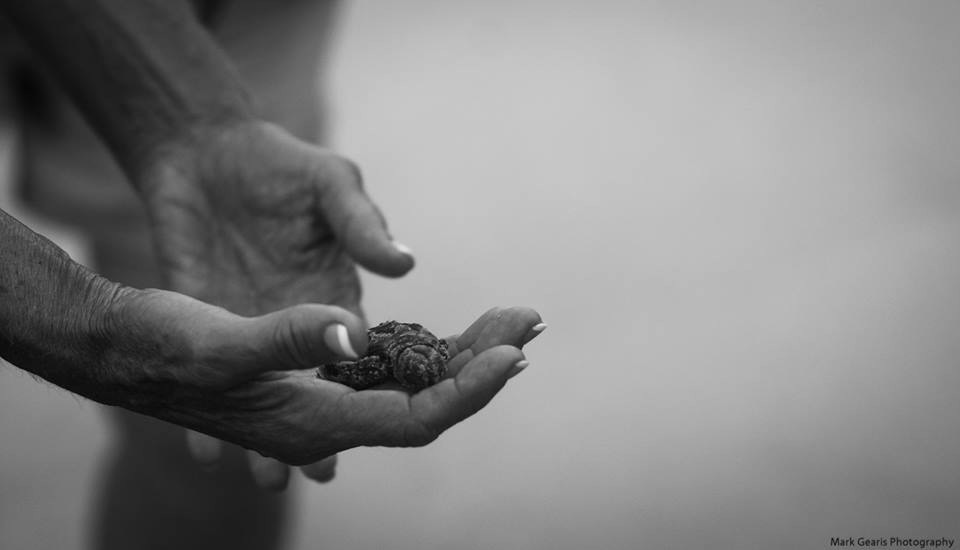The leatherback turtle digs a hole with her rear flippers in which to deposit her clutch of eggs. She digs with alternating flipper strokes. When she senses that the hole is deep enough, she will begin the egg laying process.
Once the egg chamber is completed, the leatherback turtle will begin to deposit her eggs. She covers the chamber with her rear flippers, as if she is protecting the clutch from view by observers.
The final nesting behavior before returning to the sea consists of the turtle camouflaging the nest site. After packing the sand down tightly over the eggs, the female leatherback begins to thrash with all flippers, throwing sand wildly over the nest site. This is an instinctive attempt to protect the eggs from predators.
After completing the nesting process, the female leatherback will return to the sea. She has completed her task of insuring another generation of leatherback sea turtles. She will leave her clutch on their own and possibly return to a location nearby to lay another clutch of eggs during that same season. This process is repeated every 2-3 years.
The hatchling emergence is possibly the most critical stage of the entire nesting event. Hatchlings normally emerge at night under dark conditions. The tiny turtles instinctively crawl to the brightest light source which should be the moonlight and the starlight reflecting off the water. With beach development and artificial beachfront lighting, the hatchlings become disoriented crawling toward house lights, condominium lights, and streetlights. Thousands of hatchlings are lost each year in Florida to disorientation. They get caught up in vegetation, taken by predators, and even run over by vehicles in parking lots and streets. The best way to avoid hatchling disorientation is to turn off or shield lights that shine on the beach. There are also "turtle friendly" lighting alternatives for homeowners and communities.
Once the egg laying is complete, the leatherback turtle will begin to drag the sand she took out to build the cavity, and cover her clutch with that same sand. She will carefully pack the sand down tightly over the eggs, creating a sealed chamber with just enough oxygen for the eggs to develop into healthy hatchlings.
The green turtle will follow the same instinctual behaviors of the leatherback in the nesting process. The turtles are vastly different, but the behaviors are consistently the same with all the species.
Adult loggerhead female returning to the water



